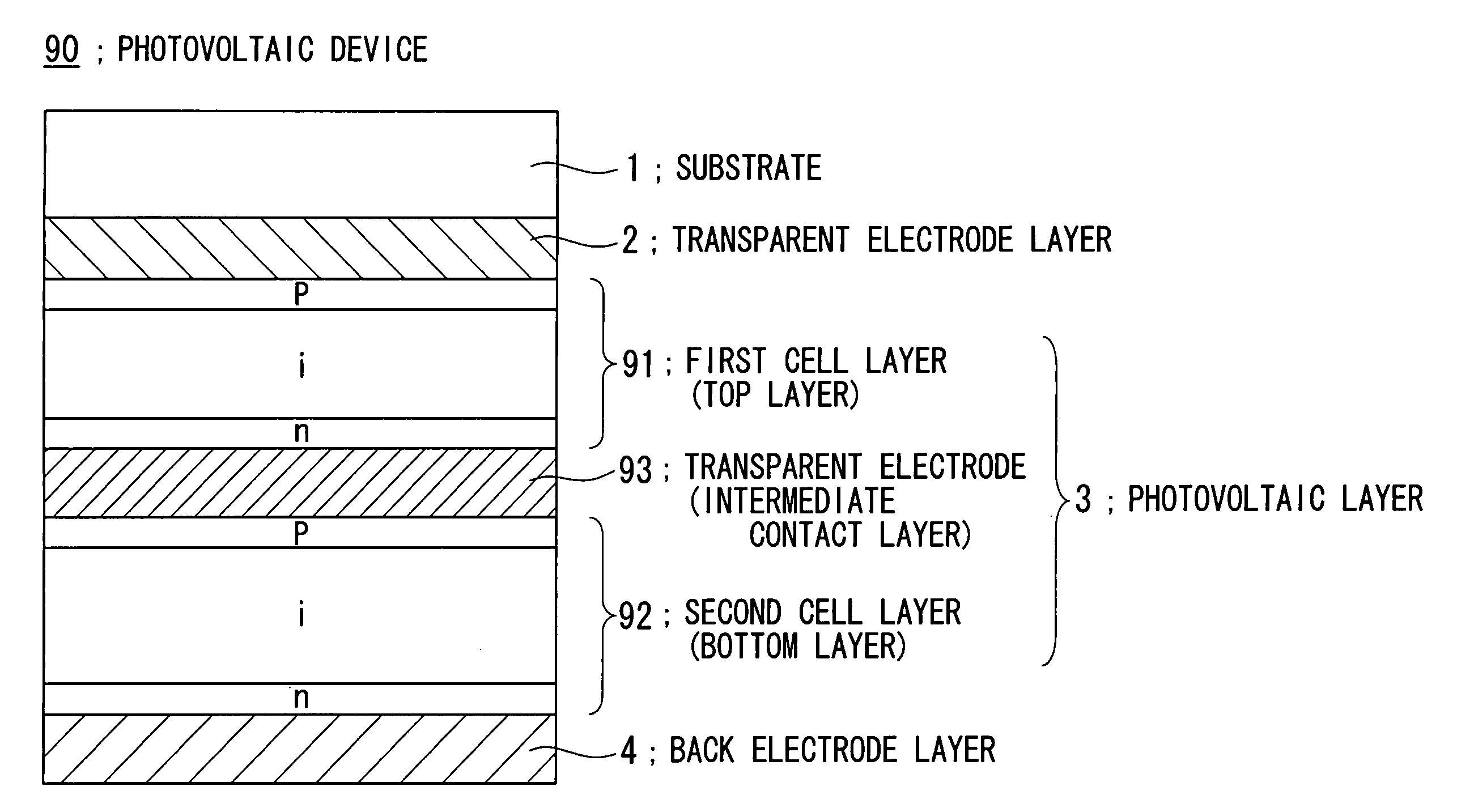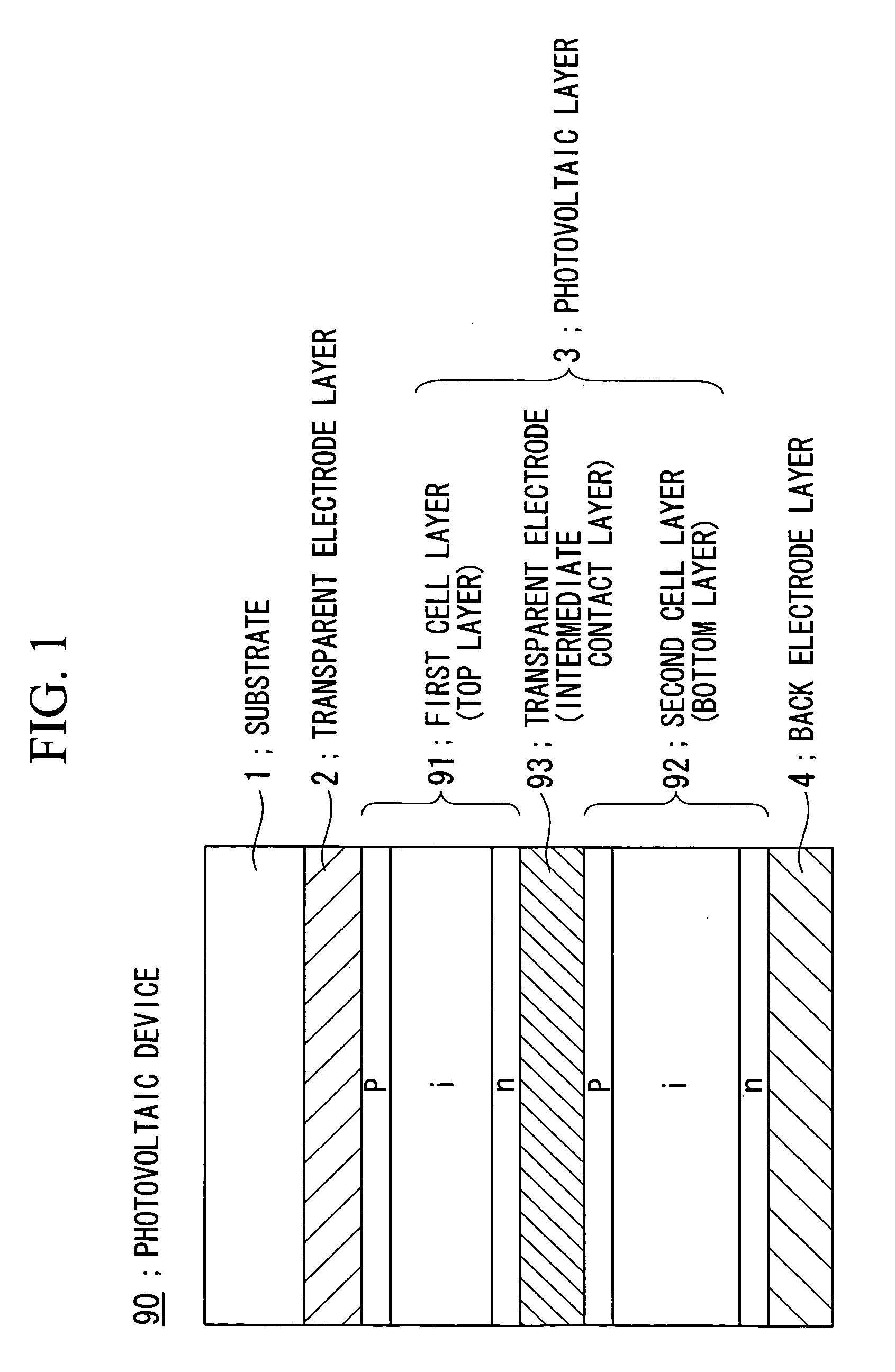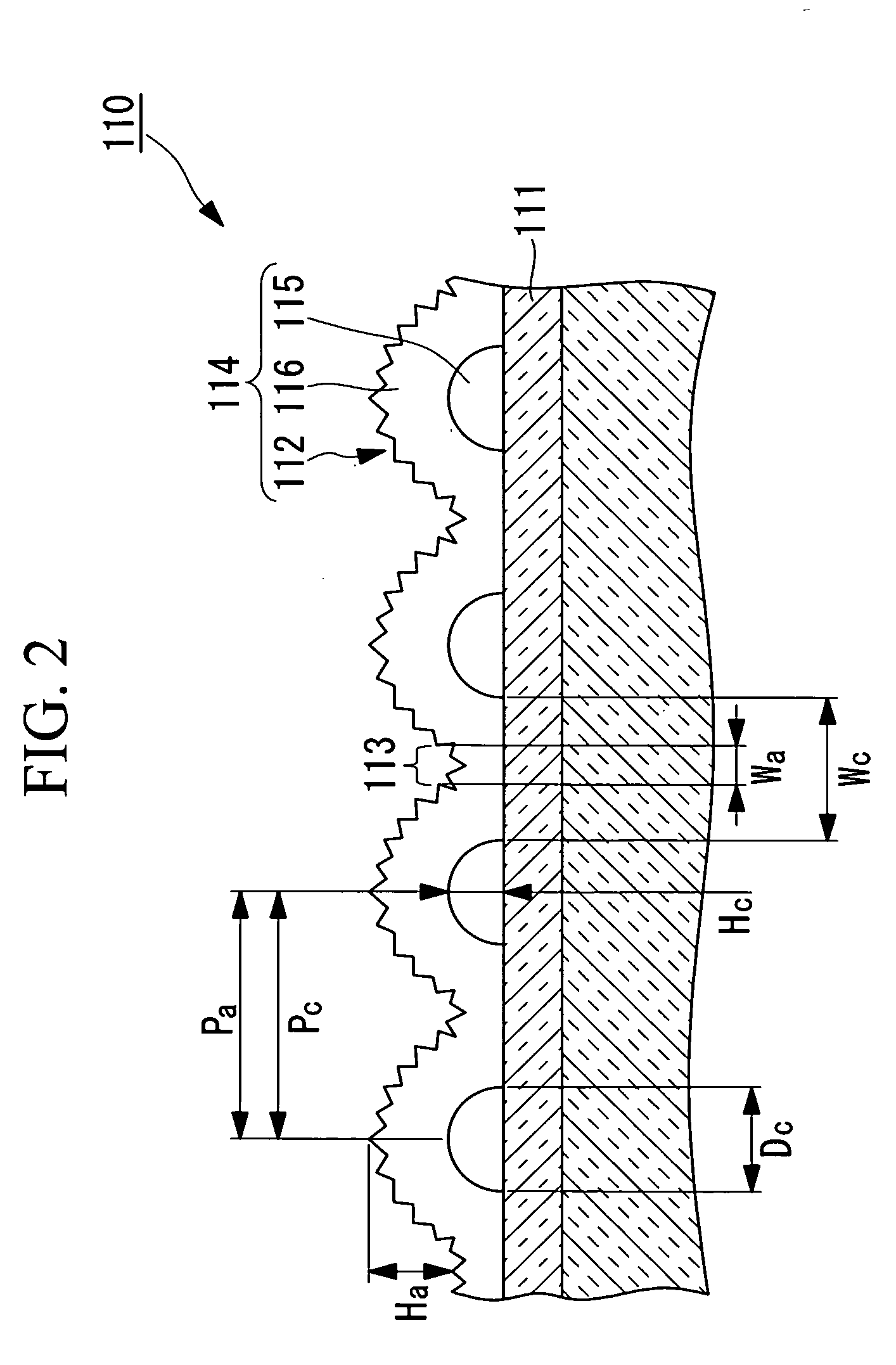Photovoltaic device and process for producing same
a photovoltaic device and photovoltaic technology, applied in the direction of solid-state devices, final product manufacturing, basic electric elements, etc., can solve the problems of marked decrease in electric power generation efficiency, unsuitable structure for electric cells, and dramatic deterioration of open-circuit voltage and fill factor, and achieve high photovoltaic conversion efficiency and high level of productivity
- Summary
- Abstract
- Description
- Claims
- Application Information
AI Technical Summary
Benefits of technology
Problems solved by technology
Method used
Image
Examples
first embodiment
[0091]A first embodiment of the present invention is described below with reference to the drawings.
[0092]First is a description of the structure of a photovoltaic device produced using a process for producing a photovoltaic device according to this embodiment.
[0093]FIG. 1 is a schematic view showing the structure of a photovoltaic device according to this embodiment. The photovoltaic device 90 is a silicon-based solar cell, and comprises a substrate 1, a transparent electrode layer 2, a solar cell photovoltaic layer 3 comprising a first cell layer (a top layer) 91 and a second cell layer (a bottom layer 92, and a back electrode layer 4. In this embodiment, the first cell layer 91 is a photovoltaic layer comprising mainly amorphous silicon-based semiconductors, and the second cell layer is a photovoltaic layer comprising mainly crystalline silicon-based semiconductors. The second cell layer 92 has a film thickness of not less than 1.2 μm and not more than 2.0 μm, and the Raman ratio...
example 1
[0186]A tandem solar cell was produced in accordance with the embodiment of the present invention described above. A substrate with a double textured structure, prepared by depositing layers of SnO2 containing discontinuous small ridges and a plurality of micro-protrusions, was used as the transparent electrode-bearing substrate (height of ridges: 500 nm, density of ridges: 30 per 10 μm square). The film thickness values for the top cell i-layer and the bottom cell i-layer in this example were as shown in Table 1, and an intermediate contact layer was not formed.
[0187]The cell performance of the obtained solar cell is shown in Table 2. The initial value for the electric power generation efficiency for the solar cell of this example, in which the film thickness of the bottom cell i-layer was set to 2 μm relative to a film thickness for the top cell i-layer of 300 nm, was able to be increased to 13.3%. This is an effect of having been able to considerably increase the electrical curre...
example 2
[0190]With the exceptions of forming the top cell i-layer and the bottom cell i-layer with the film thickness values shown in Table 1, a tandem solar cell of the example 2(1) was produced using the same method as the example 1.
[0191]The cell performance of the obtained solar cell is shown in Table 2. The initial value for the electric power generation efficiency for the solar cell of this example, in which the film thickness of the bottom cell i-layer was set to 1.5 μm relative to a film thickness for the top cell i-layer of 300 nm, was 12.8%, indicating that relative to the comparative example 1, an improvement in efficiency and a reduction in the film thickness of the bottom cell by 25% were able to be achieved simultaneously. By using the transparent electrode-bearing substrate according to this embodiment of the present invention, the same effect as that described for the example 1 enables a high electric power generation current to be achieved even when the thickness of the bot...
PUM
 Login to View More
Login to View More Abstract
Description
Claims
Application Information
 Login to View More
Login to View More - R&D
- Intellectual Property
- Life Sciences
- Materials
- Tech Scout
- Unparalleled Data Quality
- Higher Quality Content
- 60% Fewer Hallucinations
Browse by: Latest US Patents, China's latest patents, Technical Efficacy Thesaurus, Application Domain, Technology Topic, Popular Technical Reports.
© 2025 PatSnap. All rights reserved.Legal|Privacy policy|Modern Slavery Act Transparency Statement|Sitemap|About US| Contact US: help@patsnap.com



